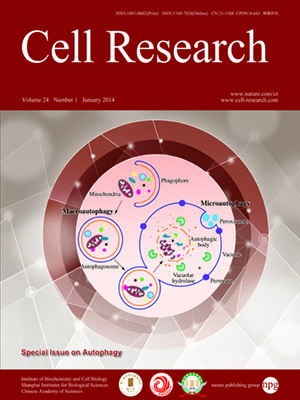
Volume 24, No 1, Jan 2014
ISSN: 1001-0602
EISSN: 1748-7838 2018
impact factor 17.848*
(Clarivate Analytics, 2019)
Volume 24 Issue 1, January 2014: 80-91
REVIEWS
You are what you eat: multifaceted functions of autophagy during C. elegans development
Peiguo Yang1 and Hong Zhang1
1State Key Laboratory of Biomacromolecules, Institute of Biophysics, Chinese Academy of Sciences, 15 Datun Road, Chaoyang District, Beijing 100101, China
Correspondence: Hong Zhang, Tel: +86-10-64848238; Fax: +86-10-64853925(hongzhang@sun5.ibp.ac.cn)
Autophagy involves the sequestration of a portion of the cytosolic contents in an enclosed double-membrane autophagosomal structure and its subsequent delivery to lysosomes for degradation. Autophagy activity functions in multiple biological processes during Caenorhabditis elegans development. The basal level of autophagy in embryos removes aggregate-prone proteins, paternal mitochondria and spermatid-specific membranous organelles (MOs). Autophagy also contributes to the efficient removal of embryonic apoptotic cell corpses by promoting phagosome maturation. During larval development, autophagy modulates miRNA-mediated gene silencing by selectively degrading AIN-1, a component of miRNA-induced silencing complex, and thus participates in the specification of multiple cell fates controlled by miRNAs. During development of the hermaphrodite germline, autophagy acts coordinately with the core apoptotic machinery to execute genotoxic stress-induced germline cell death and also cell death when caspase activity is partially compromised. Autophagy is also involved in the utilization of lipid droplets in the aging process in adult animals. Studies in C. elegans provide valuable insights into the physiological functions of autophagy in the development of multicellular organisms.
10.1038/cr.2013.154
FULL TEXT | PDF
Browse 2265


